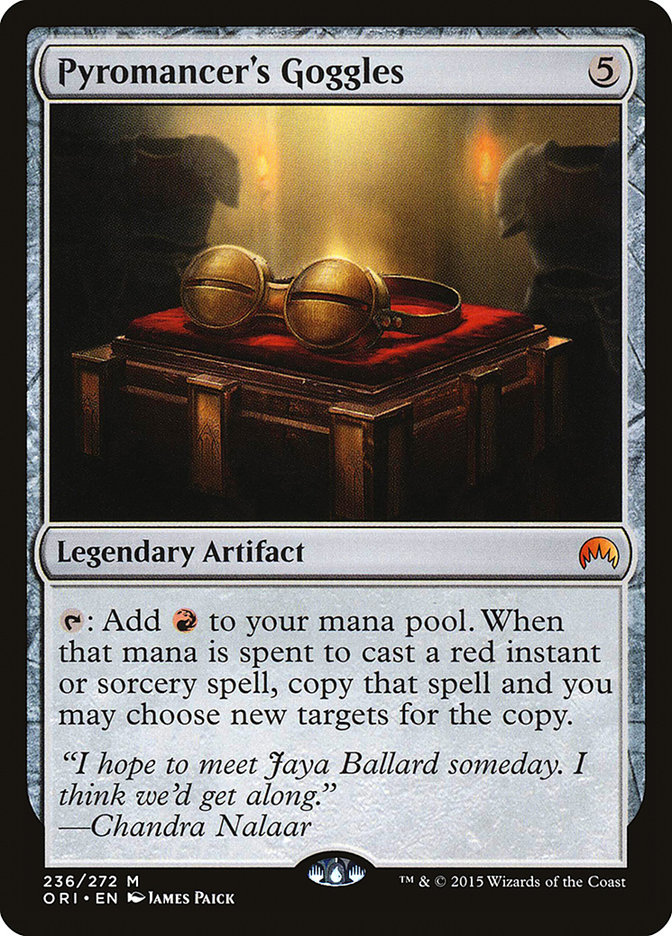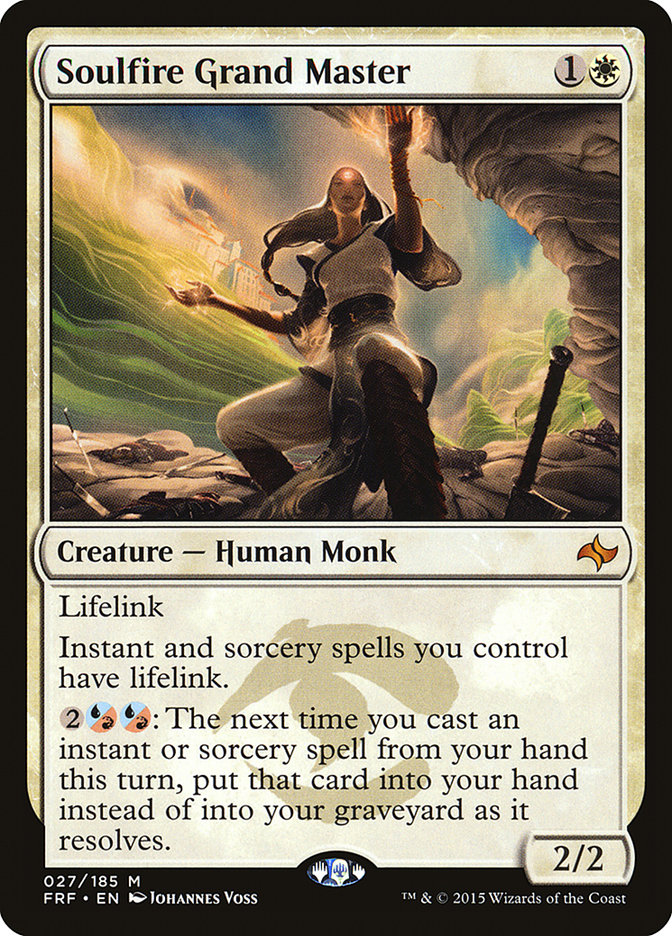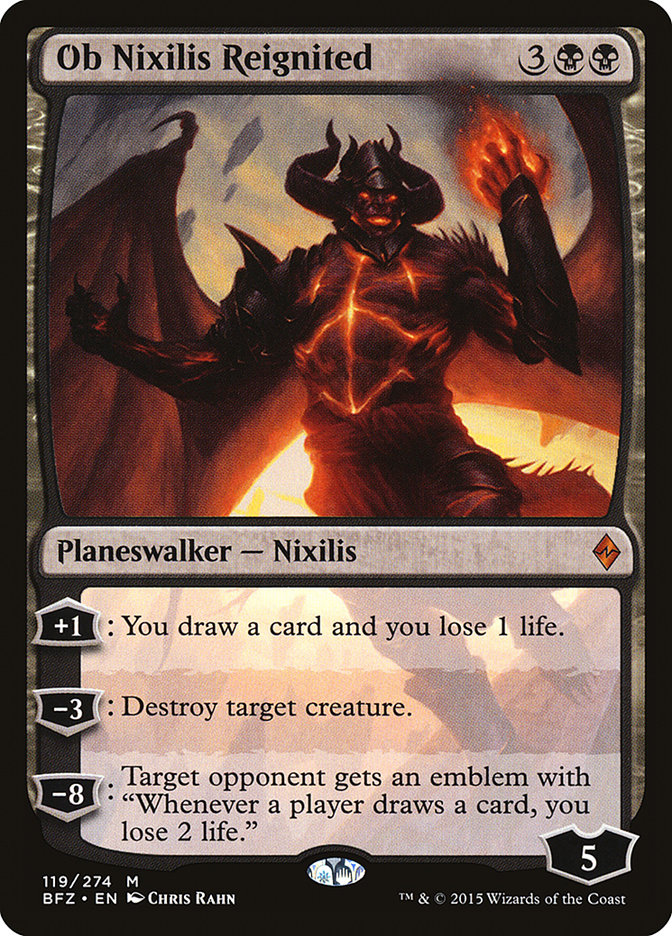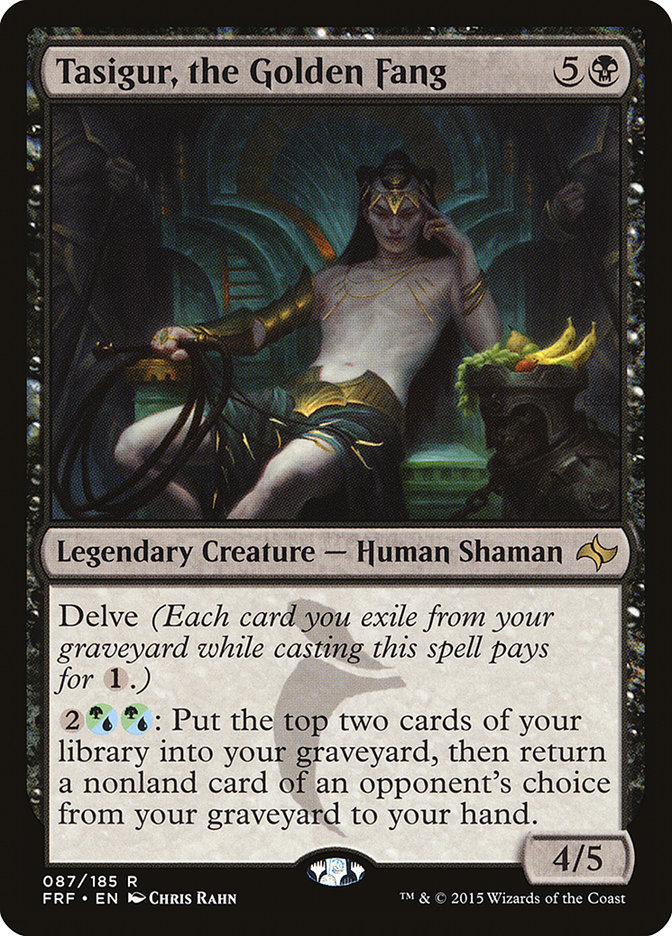In Magic, one of the things that is always important to do is revisit the past.
You don’t want to make the mistake of forgetting the near successes of the past. Worse, you don’t want to forget the failures.
If we imagine Magic in martial terms, there is a constant development of weaponry that goes on in the game. A part of this is just due to the nature of the
spreading of information in the game. We know that things change week-to-week in response to what wins.
Decks don’t just get better, they start getting more and more honed in specific response to the other decks that succeed.
By way of example, one of the big decks that Team Mad Apple (the group I worked with for #PTBFZ, a combination of NYC and Madison pro players) prepared was
R/G Landfall. This is a great deck, undoubtedly. In fact, it was a fairly successful deck that many teams chose for that event.
But check out the Top
8 from #SCGKC:
1st – Abzan Red
2nd – Jeskai Black
3rd – Four-Color Rally
4th – Esper Dragons
5th – Four-Color Rally
6th – G/R Eldrazi
7th – Temur Black
8th – Four-Color Rally
The closest deck to R/G Landfall that you’ll find in Kansas City is Atarka Red, which did have a solid showing, finishing in 10th, 13th, 15th,
28th, 29th, and 31st.
So, what happened to poor ol’ R/G Landfall?
The terrain shifted.
If you’re in a certain kind of war, it can make sense to bring a tank, but if things shift so that you’re in the mountains, a tank might not be the
reasonable choice that it once was. If you look at the history of conflict, it’s not that technology improving is the only thing that obsoletes different
kinds of war machines. Sometimes it is as simple as what kind of conflict we’re in. The US war apparatus was built up for a potential conflict in the grand
style of World War II, with the Soviet Union looming as an enemy. But, for the most part, many of those machines of war aren’t all that useful against one
of the common targets these days, foreign terrorists. A nuclear submarine is an awesome technological device. But its use is quite limited.
R/G Landfall might well have just been a slightly worse version of the best builds of Atarka Red; I somewhat suspected that going into the Pro Tour, but I
was only working on my intuition. Its current absence could partly be that it isn’t as technologically developed as Atarka Red. Or it could be
that and that its positioning in the landscape makes it weak to certain strategies. Jeskai Black, for example, isn’t omnipresent, but it is
certainly fairly strong against pure creature strategies, especially if they are combining sideboarded sweep like Radiant Flames and extra point-and-click
removal, be it Surge of Righteousness or more Wild Slash/Fiery Impulse. Where Atarka Red can potentially “go wide” with tokens, R/G Landfall has to
actually keep something alive and then feel comfortable marching it into the breach.
Practically speaking, what these shifts mean is that they present an opportunity for potential revisiting of decks that get shoved out by previously
presumed metagames.
Let’s use a practical example:
One of the decks I worked on for the Pro Tour was a deck I started calling “Mardu Green.” In order to be able to have a reasonable shot against Atarka Red
and R/G Landfall, I ended up running this package:
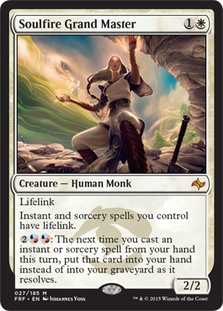



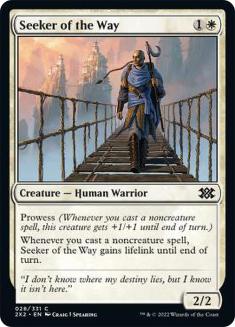



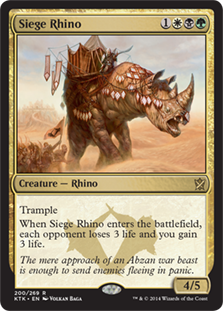



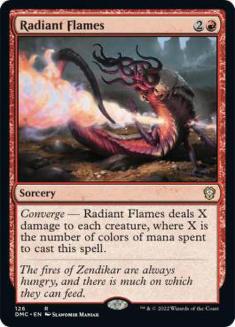



Yikes.
The deck, when finished, had a very solid record against Atarka Red and R/G Landfall, solid against Abzan, and had a wildly mixed record against Jeskai
Black (leaning bad). The Jeskai Black matchup was particularly frustrating, because some versions (like Todd Anderson’s) felt like they were practically
impossible to beat, and others felt easy-peasy.
At the end of the day, it was clear that Mardu Green was not ready for the Pro Tour.
However, some of the core of the deck was still clearly powerful and exciting.
Today, the world is very different, and I thought I’d update the deck and take it for a spin in the new metagame. With a much more specific metagame
available, two things were able to happen immediately, including the removal of the following cards:









With all of that room, several cards that had been previously tried could get back into the list, and abandoned paths could be re-explored. Here’s where
I’m at currently:
Creatures (14)
Planeswalkers (1)
Lands (26)
Spells (19)

One of the things that I love about the manabase is that I feel like I can basically cast everything in the deck. One of the things that I don’t
love about the mana is that I’ve committed to eight lands which enter the battlefield tapped, and I have a Battle land manabase. I’ve tried other
combinations of mana, but one of the things that I do have to say about this manabase is that it feels like it does the trick.
Another thing I love about this deck is the raw power it has in a lategame. You can just start overwhelming any opponent who hasn’t turned the game around.
This is in large part due to cards like this:
You “only” have sixteen cards that work with the Goggles, not counting returning them to hand with a Den Protector or Tasigur, the Golden Fang, or other
things like card-drawing into them with Ob Nixilis Reignited or Nissa, Sage Animist. However, the utter power of these cards doubled is absurd beyond
belief. The couple of copies of Tormenting Voice also both help to get rid of extraneous Pyromancer’s Goggles and also provide an incredible amount of card
advantage for the deck.
One of the most absurd things that can happen are what I call “incidental kills.”
You are basically sitting around being a midrange deck, surviving. Then, you topdeck a Crater’s Claws (or a Den Protector for Crater’s Claws, or a
Kolaghan’s Command for Den Protector for Crater’s Claws), and when you hit them with the sorcery, they take eighteen from it being doubled.
Even redundant Pyromancer’s Goggles aren’t necessarily a bad thing. You can spend the red from a Goggles, let it float, cast a new Goggles, and then use
the multiple red Goggles mana to copy additional times.
The deck is at its best when it is playing against similarly slow midrange decks that don’t go over the top of it. Ramp of any variety, whether it is R/G
Eldrazi, G/U Ramp, or other such decks – they are all really scary for the deck to deal with. Your basic plan involves discard and hoping to get reasonable
draws. Remember, copying a discard spell (Kolaghan’s Command for example) with Pyromancer’s Goggles is a great thing you can do, and at instant speed
thanks to the Mardu-discard. It’s still a wretched matchup but not unwinnable. On the other hand, the deck feels so absurdly in the driver’s seat in the
midrange matchup; if that is the metagame you’re in, you’ll probably feel very good.
Aggro decks are an interesting mixed bag. Radiant Flames is a powerful weapon against them. One of the things that you want to do in this set of matchups
is just concede a little bit of your lategame power so that you can simply be a powerful conventional deck, and, in essence, “Jund them” into submission.
Crackling Doom is a potent weapon against the potential of a Become Immense kill.
Control decks you treat similarly to ramp, but you’re actually much better off, since they often don’t have a good answer to Pyromancer’s Goggles, and you
can just out-card them.
This deck isn’t a “new deck” for me. I’ve been working on it for quite a while, and it has never quite felt like it was good enough. At this point, having
run it through several eight-person tournaments and a large number of two-person matches, I know that the deck is solid enough to be profitable on Magic
Online, but I can still feel the true weakness of the deck. Fixing the Ramp matchup feels like it takes out so much from the deck that you end up enough
weaker versus other decks that it is probably untenable. I still keep wondering if what I need for the deck is Utter End, or if I should be mixing up my
numbers of Soulfire Grand Master and Seeker of the Way.
The details aside, there are four decks I’m currently playing in Standard: Atarka Red, Esper Dragons, Esper Control, and Mardu Green. It is possible that
the landscape will change in such a way that I will center in on one or another of these decks over the rest, but for now, my preferences for any single
deck over the others of these is rather small.
What is important, though, is not only paying attention to what is winning right now, but remembering to keep in mind things that had a kernel of
value in them before, and determining whether it is finally the time to take out the deck that wasn’t good enough to make the cut before. Usually the
answer is to stick with the known good deck, but sometimes, the time is right to stretch a little.
If you did good work on something before, it hasn’t necessarily gone to waste, so while you don’t want to trick yourself into believing a failed idea is
now a success, you also don’t want to ignore yesterday’s near-successes: they could be tomorrow’s surprise win.
I hope you enjoy the deck and have a great holiday.

